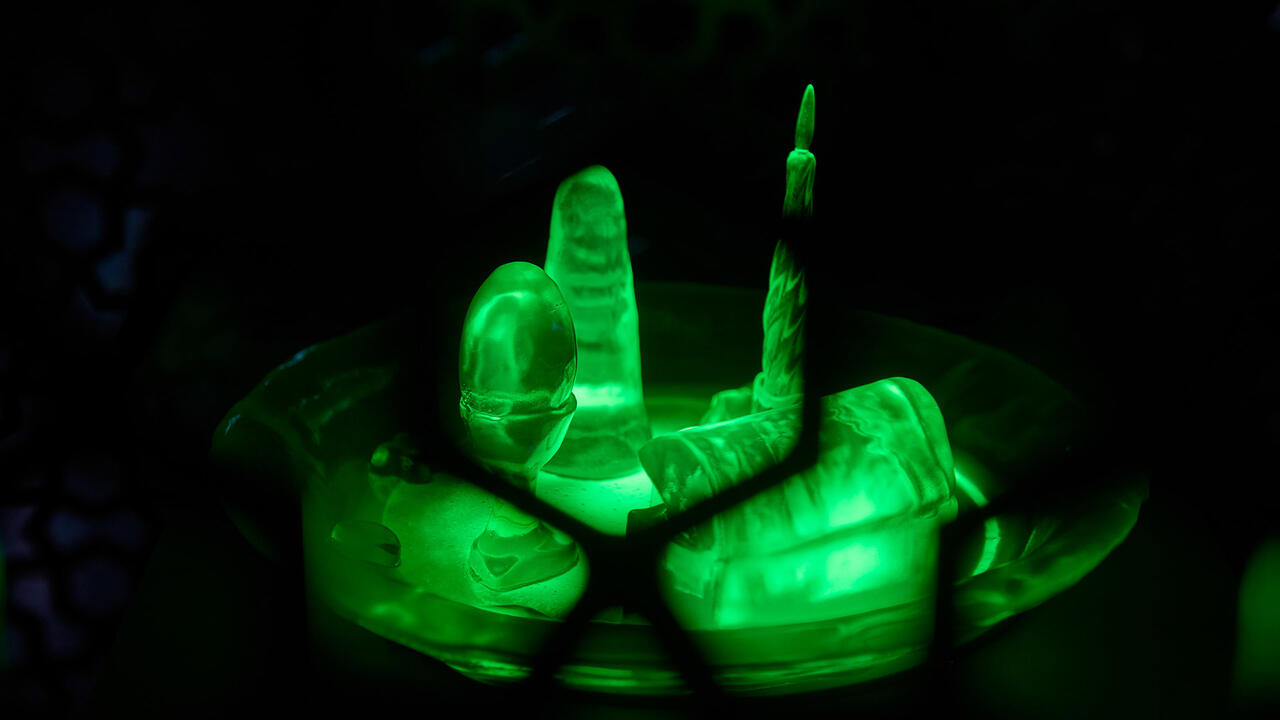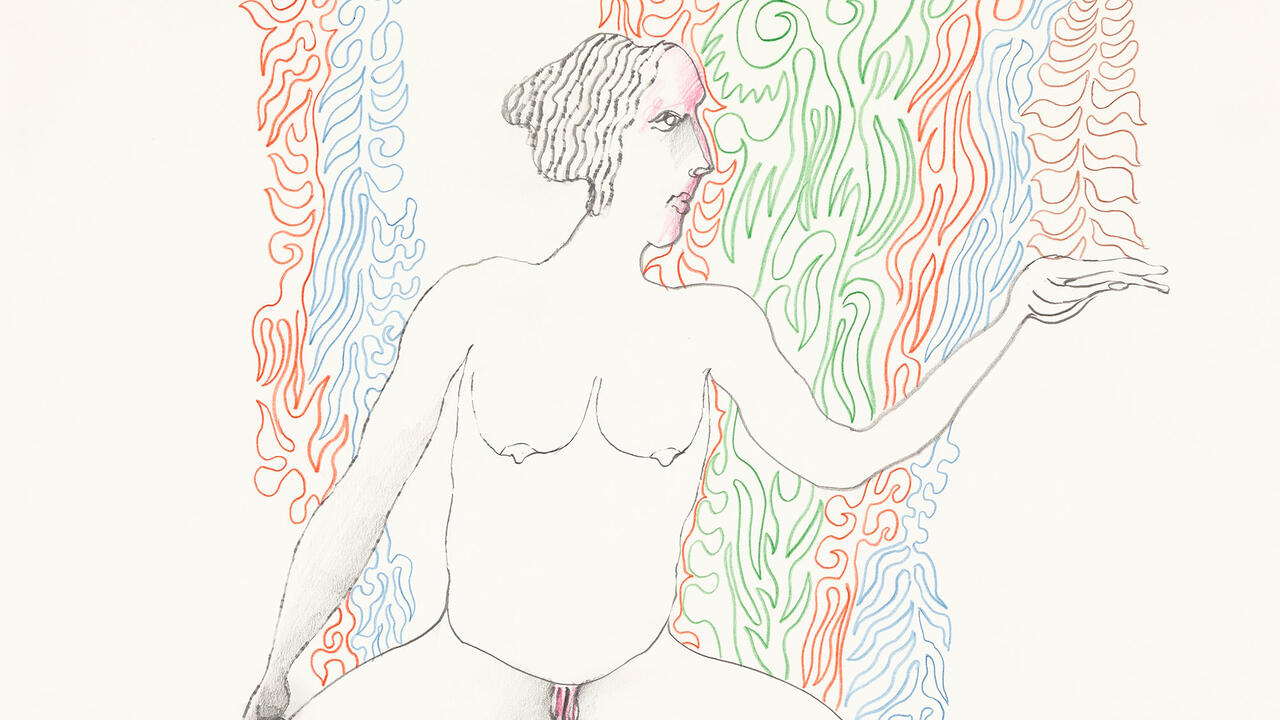All Buttoned Up
Two months before the US presidential elections, a look at the history of badge design in American politics
Two months before the US presidential elections, a look at the history of badge design in American politics

‘G.W. – Long Live the President’ – not some plea to elect George W. Bush to a third term, but America’s first political button, commemorating George Washington’s inauguration in 1789. Campaign badges have a long and illustrious history in the US; created anonymously, they’re democratic and often plain-speaking, witty and kitsch. All of which has been seen over this fortnight of political theatre, the presidential nominating conventions, where first the Democrats then the Republicans officially name their candidates among the flashing lights, confetti, balloons, flags – and badges. The events can sometimes feel a little like an off-the-hook Hans Haacke piece. How else can you explain the delegate with a baseball cap covered with several miniature toilets (because the economy has gone down the drain), or the Californian sisters who drove to Denver in a vintage Volvo station wagon (the official car of the American liberal) entirely covered in Obama bumper stickers?

Buttons and campaign swag took off in the 1820s with an increase in suffrage. When voting rights expanded beyond the landed gentry, meaning that all white men could vote, politics became a heady affair: campaigns gave away trinkets and buttons supporting candidates became common. The first to make broad use of them was Andrew Jackson. (Incidentally, Jackson is also credited with giving birth to both the Democratic Party and its key symbol, the donkey. His rivals called him ‘jackass…’) Still, long before Jackson and political kitsch caught on, people were making their partisan leanings manifest. In Constantinople men painted their fingernails to indicate their party of choice: green for Hypatius and blue for Justinius.

The Smithsonian has a collection of some 30,000 political buttons, collected by Harry Rubenstein and Larry Bird, the institution’s curators of political ephemera. I caught up with them as they drove along I-25 on a collecting trip to the Denver convention. Larry explains that US politics has a stronger tradition of buttons than in the UK, ‘because instead of voting for the party, you’re voting for the person’, adding that the most popular era was the 1950s. Then you got classic designs like the Ike button, just ‘I-K-E’ in red, white and blue. It was distributed to people by the carload. ‘From the very beginning of American politics though,’ Larry says, ‘people would sew metal discs to clothes and partisan newspapers gave out campaign ribbons for free, distributing them with papers. That’s what led to buttons as we know it.’

Gary Hart, whose presidential hopes were ruined after a widely reported affair, was greeted with this button when he re-entered the race in 1988
The political badge has developed with technological advances. 1860 wasn’t just the year of Lincoln’s election but also the date of the first patent for buttons using photo reproductions. (The patent, no. 29652. included an illustration of Abraham Lincoln sporting a soul patch.) In 1896 buttons became cheaper and more colorful as paper images were wrapped around a metal disc and covered with celluloid. For the Republican convention in St. Louis, a New York delegate ordered 25,000 McKinley buttons. According to an 1896 New York Times article, the buttons read ‘Count Us For McKinley’, a subtle reference to the year’s big campaign issue, whether to stick with the gold standard for currency. The badges sported McKinley’s profile, which the Times deemed ‘much too sharp to be Napoleonic.’ Nonetheless, they were, by all accounts, ‘very effective agents in bringing about a McKinley victory’ at the convention.


Buttons sometimes have more symbolic meaning than simply the name on the badge. In 1868, despite the fact that they couldn’t vote, African-American women in the south would walk miles to get Republican buttons much to the chagrin of their white employers. (Lincoln was a Republican and had abolished slavery three years previously.) Teddy Roosevelt’s first button for the 1904 election showed him having lunch with Booker T. Washington. The button had a one word legend: ‘equality’. The New York Times wrote in 1903 that, ‘Colored men have been the first to wear the button and many are to be seen with the badge adorning their coat lapels.’

Political kitsch has included everything from chamber pots emblazoned with candidates’ names to juice tins. During the 1960s, ‘Gold Water, the right drink for conservative taste’ , endorsed Barry Goldwater, while a Lyndon B. Johnson-themed beverage read, ‘A drink for health care’ (state-funded healthcare for the elderly and poor was part of Johnson’s Great Society legislation). By 1968 the most popular button was ‘I want to be president too.’ (The Democratic candidates alone that year included Johnson, Robert F. Kennedy and Eugene McCarthy. Though president, Johnson dropped out of the race because of Vietnam’s unpopularity, while McCarthy and Kennedy ran a primary campaign that makes Barack Obama and Hillary Clinton’s seem positively amiable).
My favourite campaign pin is simple, iconic and small: a tiny gold peanut. It advertises Jimmy Carter (a peanut farmer) but doesn’t include his name or platform. (Perhaps my love of it can be attributed to a personal connection: I wore the pin when campaigning for Carter when I was eight.) Larry explains, ‘With buttons, you really get the person. Voters connect individually, and people have a tangible connection to the campaign.’ For this reason Larry claims that if he had US$10,000 to spend as a campaign manager, he’d invest in buttons rather than adverts.
Despite the myriad buttons and badges at the conventions, campaign buttons have fallen off since their heyday in the ’50s. In fact, they started to die out in the late ’70s – about the same time that the Carter peanut came out. ‘That’s when campaigns started allocating their budgets for TV advertising,’ Larry explains. ‘Now I have to pay you a dollar to put your message on my chest,’ he says with disgust.


In a sea of puns, flags and stars, the peanut – like the IKE button of which Larry is so fond – is also remarkable for its simplicity. Now, despite their lurid appearances at the conventions, buttons have become anodyne. McCain’s include a green one targeting the Irish with a shamrock over the ‘I’, pictures of McCain against an American flag, a simple star (perhaps a reference to his military service), slogans like ‘Country First’ and ‘Ready from Day One’, a phrase recently associated with Hillary, women for McCain, race fans for McCain (with the checkered flag). Obama’s buttons naturally include ‘Yes We Can’, pictures of his family, even the ‘terrorist’ fist bump with Michelle, not to mention ‘Republicans for Obama’, ‘Asian-American Pacific Islanders for Obama’, ‘Latinos for Obama’, ‘Veterans for Obama’ and a gay pride Obama with a rainbow. (Nixon’s 1972 campaign made representing different ethnic groups a requirement. He had buttons for the Polish, Armenians, Irish, Estonians…). The best of either campaigns, though, is the smallest: a one-inch ‘O’ logo.
‘The Obama logo is good,’ Harry says. ‘It has the potential to be an icon like that Carter peanut. That graphic, the ‘O’ with the sun rising is refreshing, and you’d expect to see that reflected in buttons with a new look, but most materials are produced by vendors outside the campaign, so it hasn’t crossed over.’ Those looking for well-designed buttons should turn to the left-leaning magazine The Nation. Graphics legend Milton Glaser has designed their badges including the simple, iconic McBush.
















